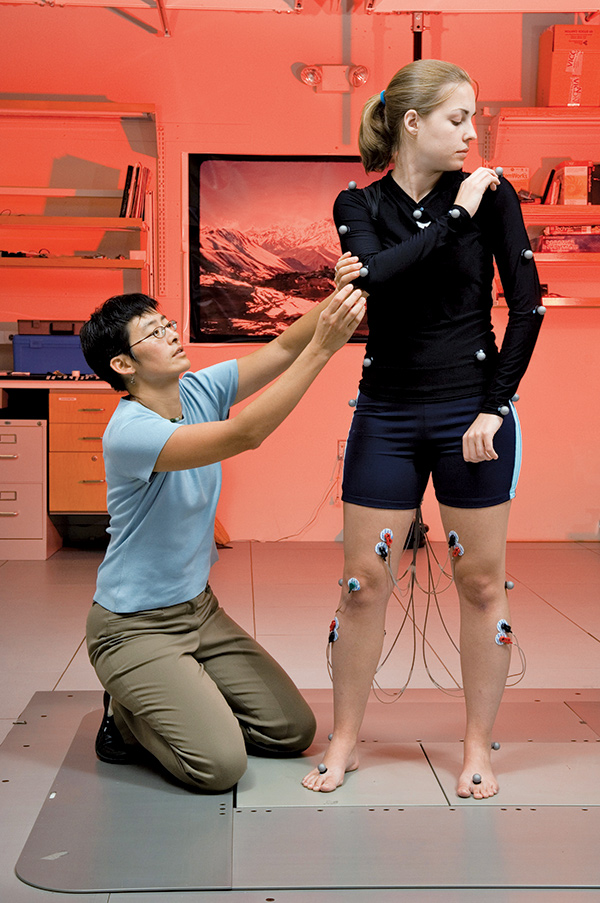I, Helper
Robots as personal assistants can pick up, clean up, even dance

Gary Meek/Special
Evil robots need not apply.

Ting and graduate student Stacie Chvatal set up a balance test.
Rob Felt/Georgia Institute of Technology
Scientists at Emory and the Georgia Institute of Technology are working to develop a therapeutic robot to help rehabilitate and improve motor skills in people with mobility problems, with a $2 million dollar grant from the National Science Foundation’s Division of Emerging Frontiers in Research and Innovation.
“Our vision is to develop robots that will interact with humans as both assistants and movement therapists,” says principal investigator Lena Ting, associate professor in the Wallace H. Coulter Department of Biomedical Engineering at Emory and Georgia Tech. “We expect our project to have a long-term impact on the quality of life of individuals with movement difficulties, such as those caused by Parkinson’s disease, stroke, and injury, by improving fitness, motor skills, and social engagement.”
To design a robotic assistant, however, researchers must first understand the people they are trying to help. Ting’s group is starting by focusing on human motor coordination in walking and balance control and identifying the neural mechanisms governing improvements after rehabilitation.
Researchers in the Coulter Department’s Healthcare Robotics Lab also are developing robots that can assist older adults or individuals with disabilities, injuries, or illnesses.
“One of our motivations is that many of these people would prefer to live at home instead of moving to an assisted living facility,” says Charles Kemp, director of the lab and a professor in the biomedical engineering department at Georgia Tech and Emory.
Robots that can move from place to place in an unstructured environment, such as a home or apartment, and physically move items are known as “mobile manipulators,” and Kemp’s lab has three of them: El-E, Cody, and GATSBII. They have wheels and arms, and are about the size of a person. “Their arms and size let them reach important locations, such as table tops,” Kemp says. “They also have the strength to perform tasks such as opening a refrigerator door.”
The lab has developed a robot that can respond to a laser pointer, which allows the user to direct the robot to specific items. Ultimately, the robot would be able to perform tasks such as opening doors, picking up dropped objects, even retrieving items from drawers.
In cooperation with Emory’s Center for ALS, a prototype El-E was tested with patients with the progressive neurological disease. More than 94 percent of the time, the robot was able to pick up and deliver requested objects that might be found in the home.
Madeleine Hackney, coprincipal investigator and assistant professor in geriatrics, has another task for the robots: dance partner. She has studied how partnered dancing may improve balance and motor skills for older adults, especially those with vision or movement disorders. Her work is supported by the Rehabilitation R&D Centers of Excellence at the Atlanta Veterans Affairs Medical Center.
During the therapeutic robot project, the team will test its robot’s coordination, cooperation, and communication skills by showcasing its ability to participate in a box-step dance and adapt its movements to the skill level of its partner. “Partnered dancing is a rather sophisticated form of nonverbal communication, by which two individuals can form common movement goals,” Hackney says. “When we successfully leverage the principles underlying this form of communication, [the robot] Cody should be able to dance in partnership with a human being.”





